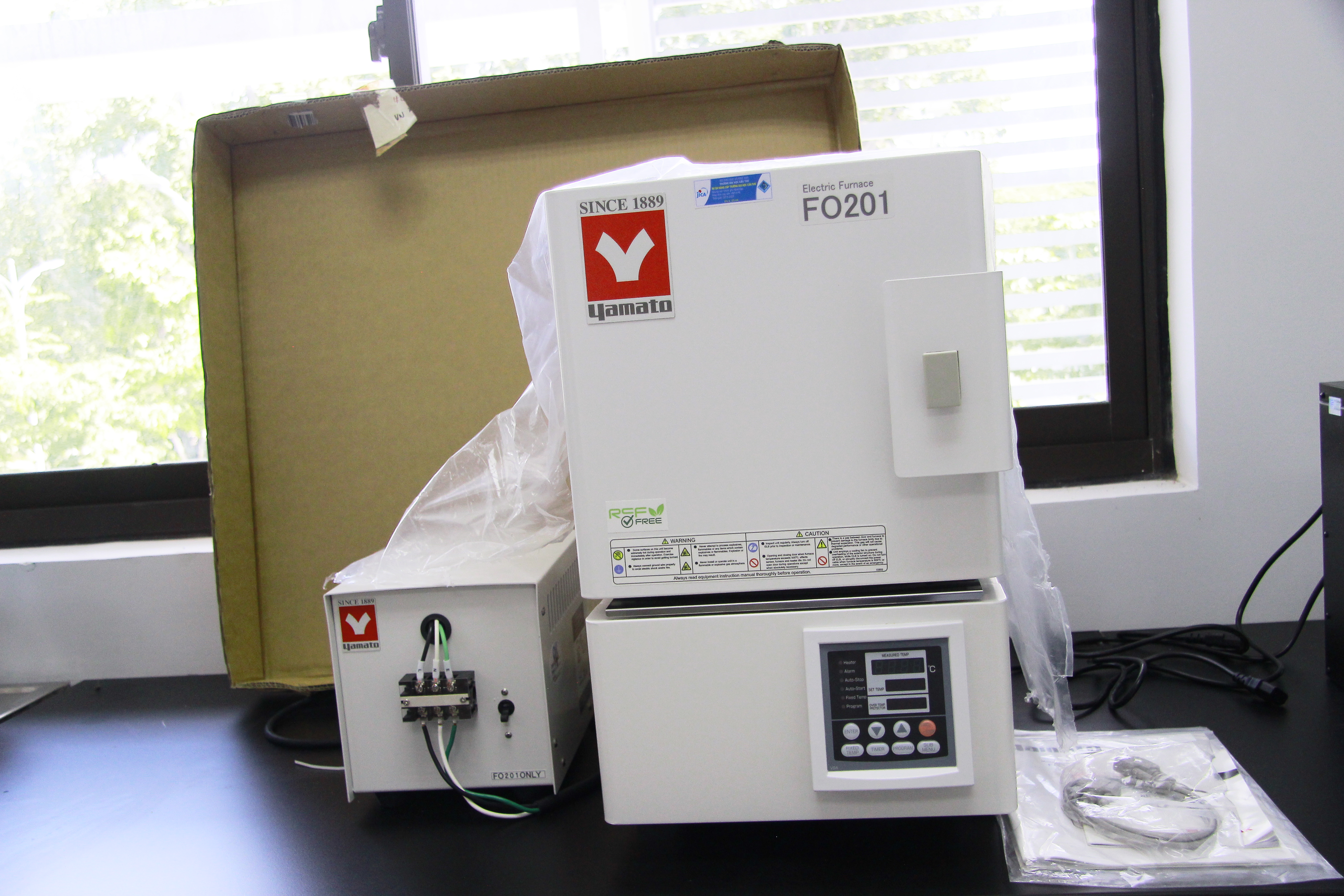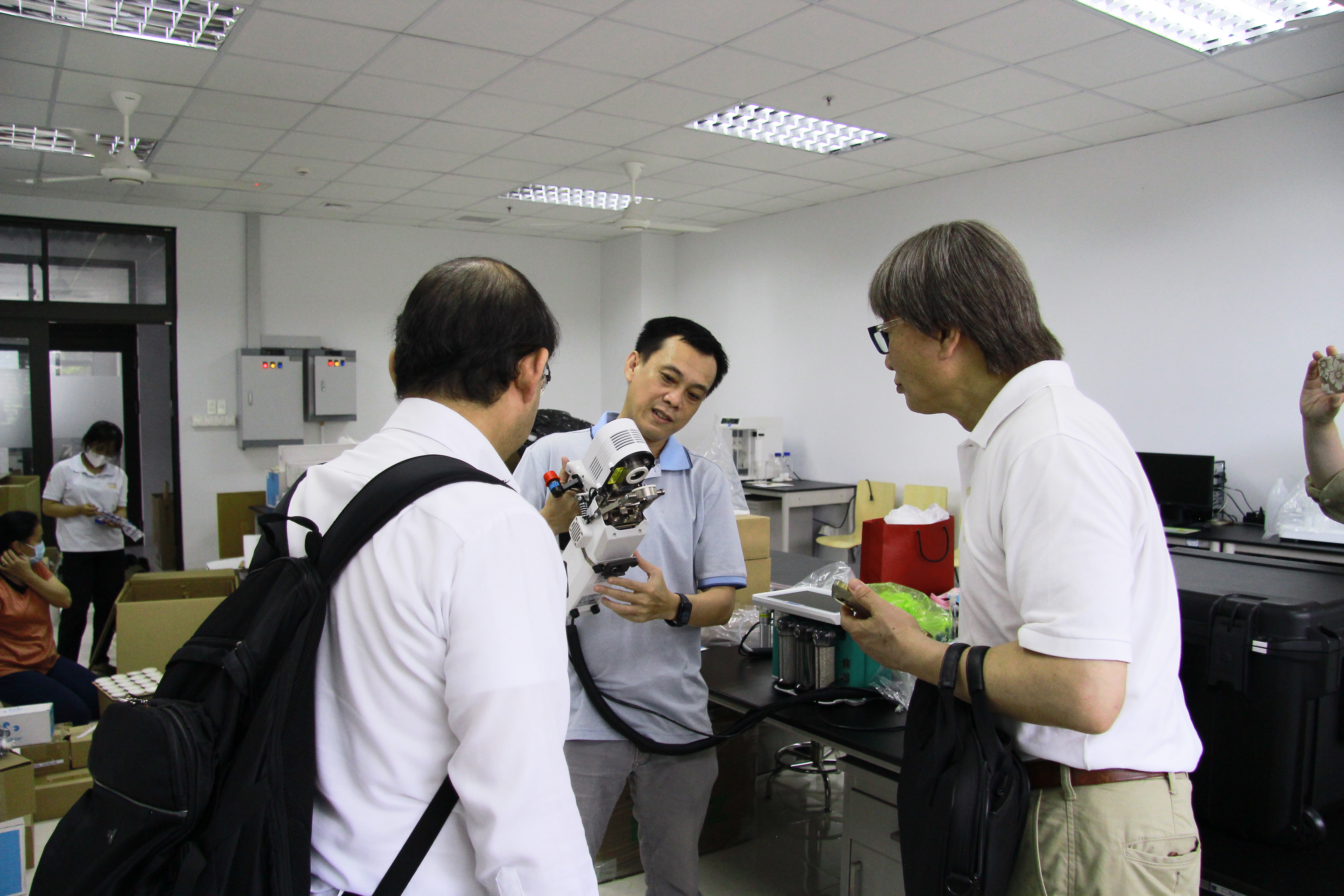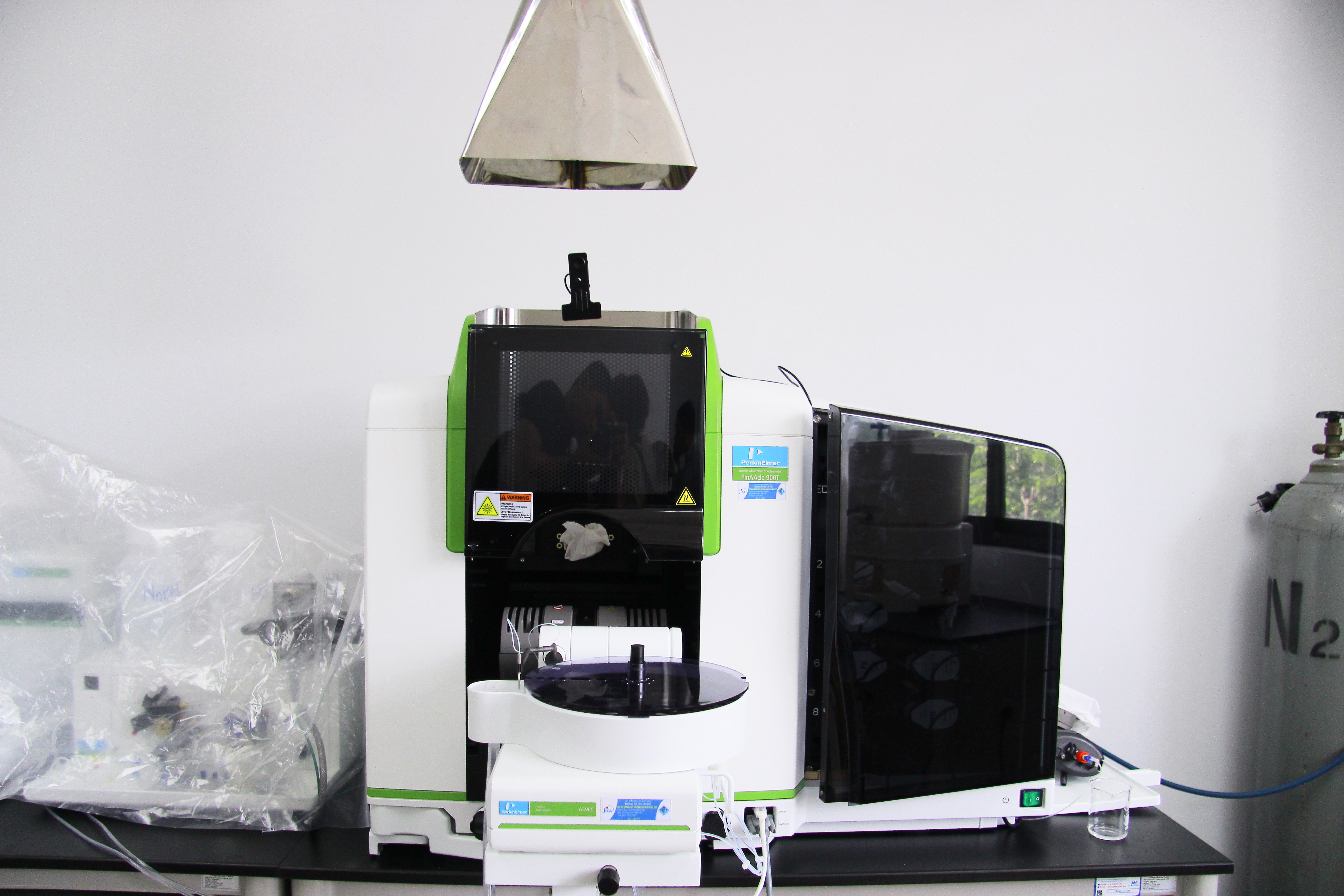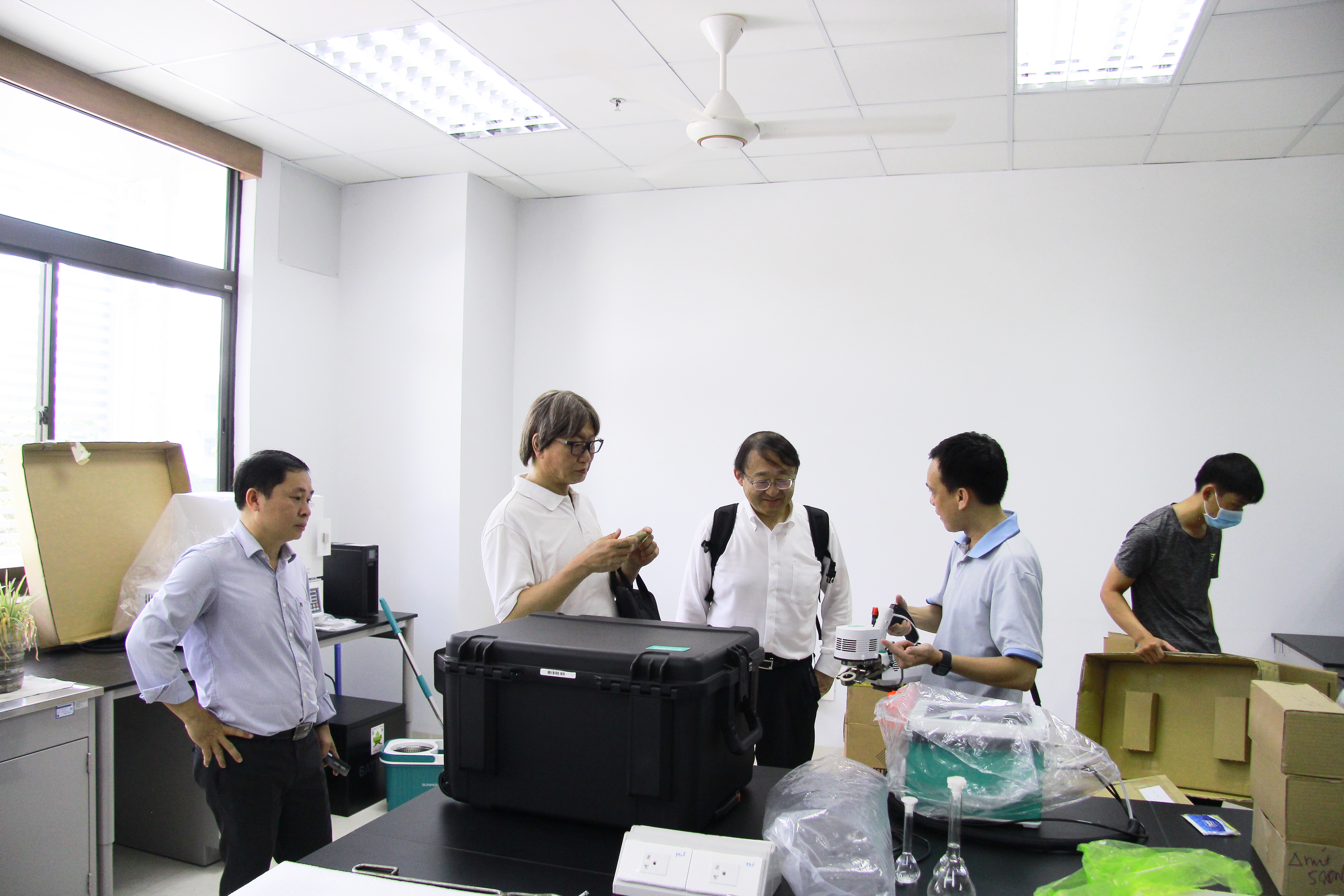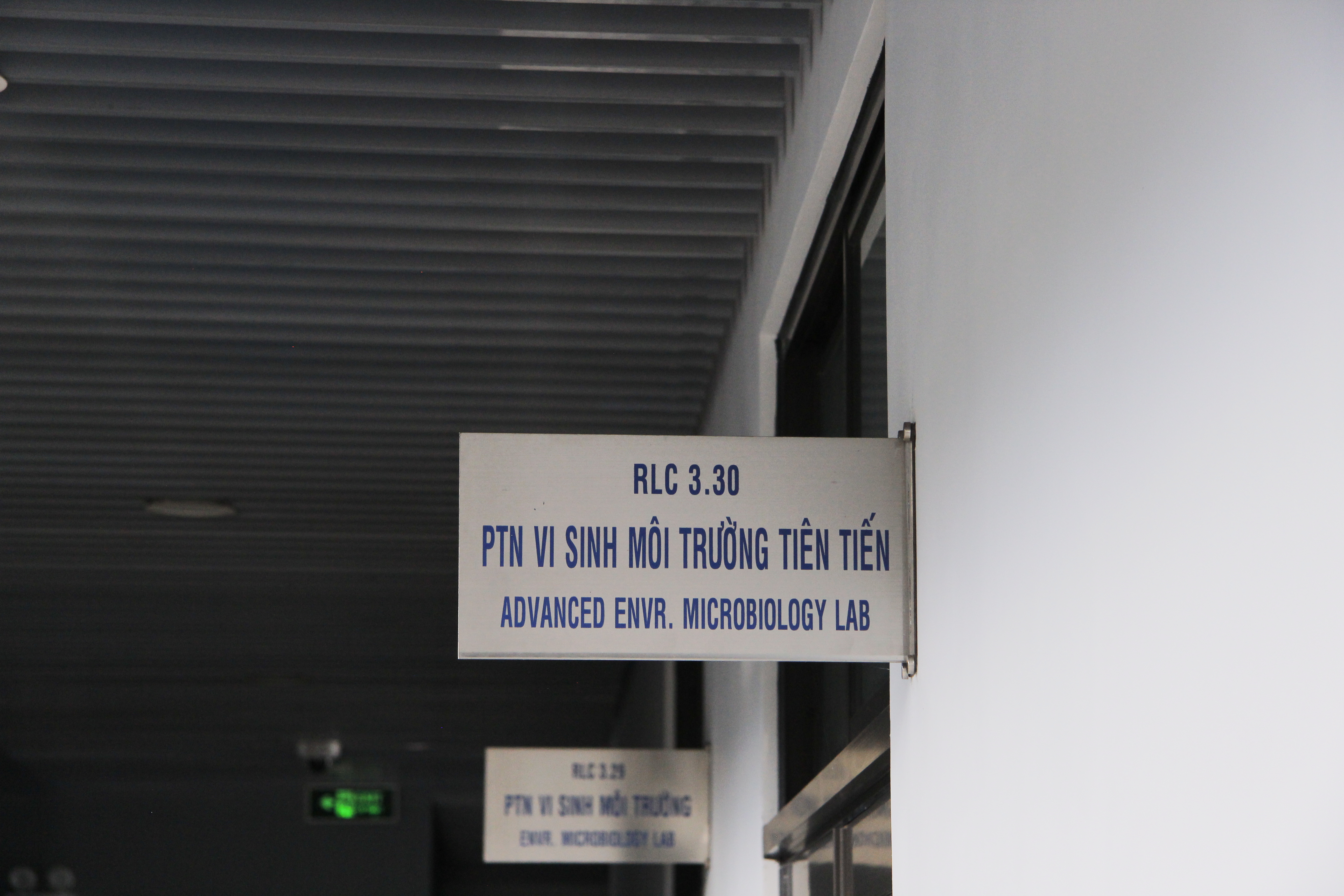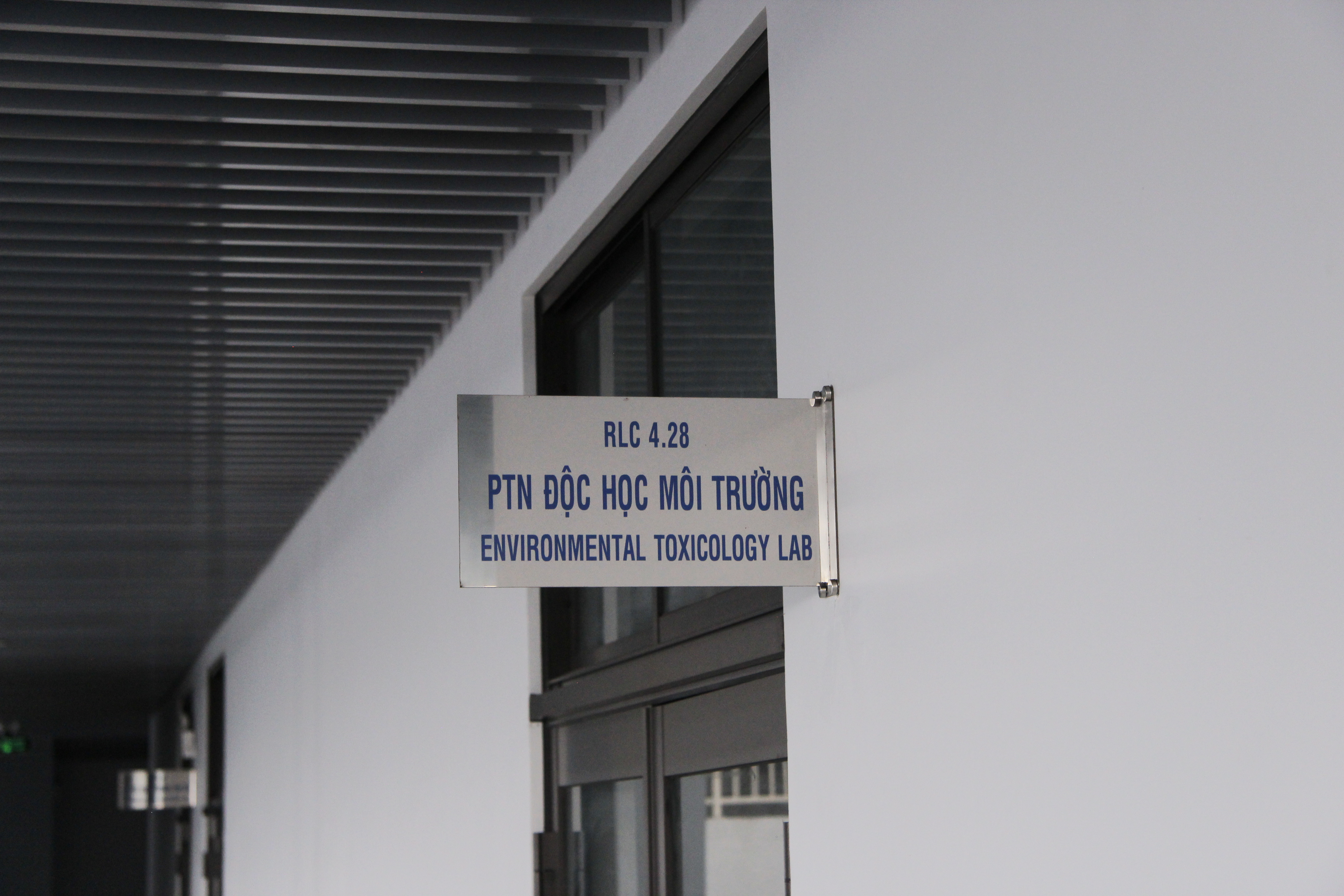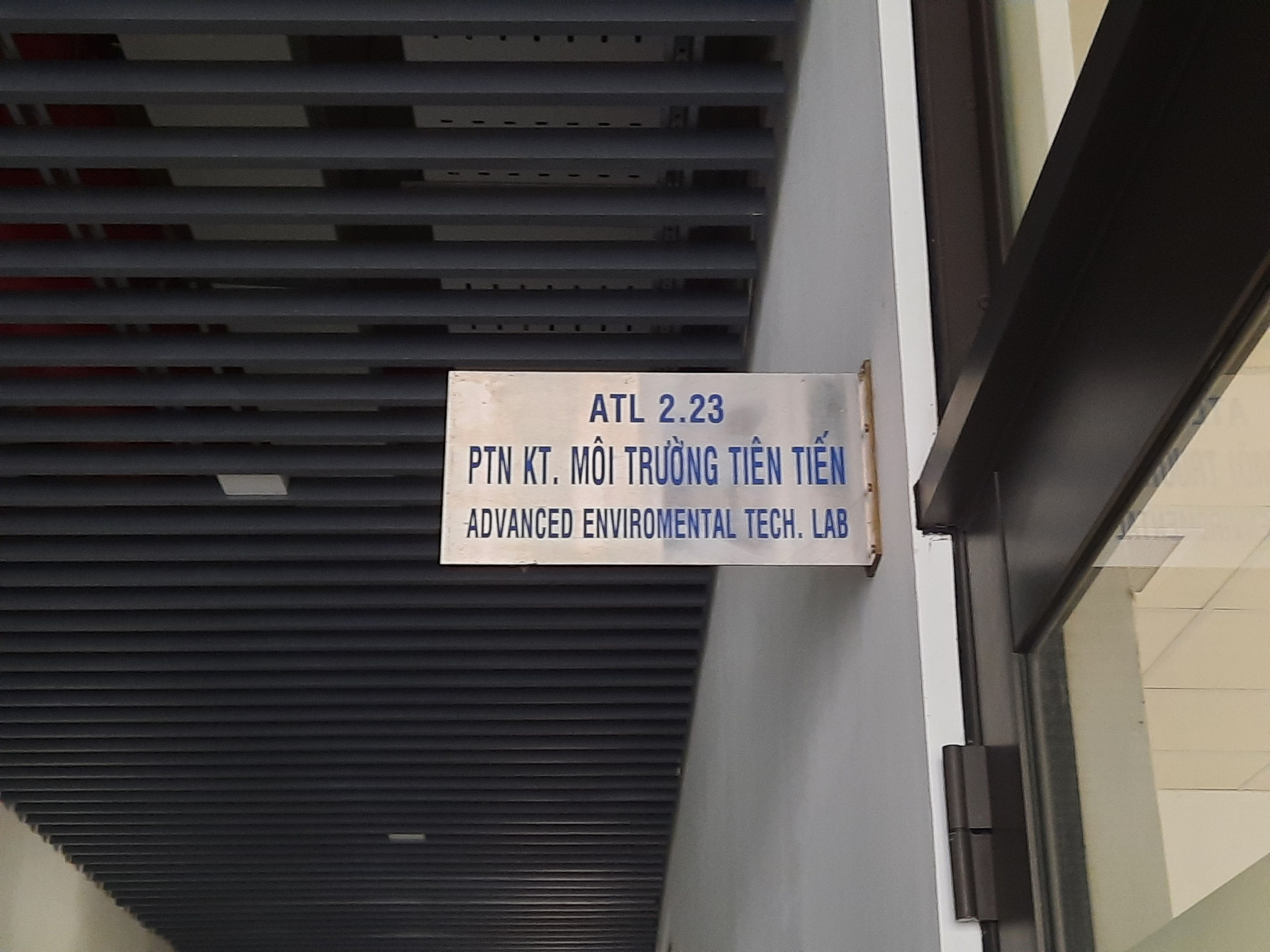- Written by Tran Hoang Kha
- Category: KHMT - infrastructure
- Hits: 71
1. INTRODUCTION
Previously known as the Aquatic Resources Practice Room, according to Decision No. 6404/QĐ-ĐHCT under the project to upgrade Can Tho University, the laboratory has now been established as the Environmental Biology Laboratory and the Advanced Environmental Biology Laboratory. This specialized laboratory serves teaching and research purposes. The laboratory operates regularly, allowing students and researchers to conduct practical experiments, consolidate theoretical knowledge, support specialized courses, and assist in scientific research for staff and students.
2. PERSONNEL
- Laboratory Head: Assoc. Prof. Dr. Ngo Thuy Diem Trang
3. LABORATORY LOCATION
Rooms 3.29 and 3.30, RLC Building
4. LABORATORY EQUIPMENT
The laboratory is equipped with various specialized tools and devices. It also collaborates with other laboratories within the department to ensure comprehensive support for learning and research activities.
The laboratory's equipment is primarily funded by government budgets and international cooperation programs, particularly Japan's ODA program.
Main laboratory equipment:
| No. | Equipment Name | Manufacturer | Model | Country |
|---|---|---|---|---|
| 1 | Microscope Camera | Olympus | DP22 | Japan |
| 2 | CO2 Incubation Chamber | Esco | CCL-170 | Indonesia |
| 3 | UV/VIS Spectrophotometer | Hitachi | UH5300 | Japan/China |
| 4 | Autoclave | Hirayama | HV-110 | Japan |
| 5 | Incubated Shaker | Thermo Scientific | MaxQ 420 HP | USA |
| 6 | Microscope | Olympus | BX43 | Japan |
| 7 | Environmental Chamber | Thermo Fisher Scientific | 3907 | USA |
| 8 | Freezer | PHC Corporation | MDF-U33V-PB | Japan |
| 9 | Elemental Analyzer & Mass Spectrometer | PerkinElmer Shimadzu | 2400 Series II GC-2014 | UK and Japan |
| 10 | Drying Manifold | Martin Christ | Beta 2-8 LSCplus | Germany |
| 11 | Soil Gas Flux Measurement | LI-COR | LI-8100A | USA |
| 12 | Rotary Evaporator Vacuum System | Buchi | R-300 | Switzerland |
| 13 | Oven | Memmert | UF1060Plus | Germany |
| 14 | Water Purifier | Young In Chromass | aquaMAX Ultra 373 | Korea |
| 15 | Underwater Light Sensor | LI-COR | LI-192SA | USA |
| 16 | Shaking Waterbath | Julabo | SW23 | Germany |
| 17 | Balance | Mettler Toledo | MS105 | Switzerland |
| 18 | Screen Sieve Set | Humboldt | Various models | USA |
5. FUNCTIONS AND DUTIES
The Environmental Biology Laboratory and Advanced Environmental Biology Laboratory ensure two main functions: practical teaching and supporting scientific research.
Analytical capabilities of the Environmental Biology Laboratory and Advanced Environmental Biology Laboratory:
| Laboratory Name | Key Analytical Parameters | Key Equipment |
|---|---|---|
| Advanced Environmental Microbiology Laboratory (Room 3.30) | Microbial analysis | Incubated Shaker-MaxQ 420, Environmental Chamber-3907-Thermo |
| Aquatic Resources Laboratory (Room 3.31) | Plankton (Zooplankton and Phytoplankton) | Electron Microscope-BX43-Olympus |
| Environmental Biology Laboratory (Room 3.32) | CHNS and O Elemental Analysis | Elemental Analyzer-2014-PerkinElmer Shimadzu |
| CH4, N2O gases | GC-2400 Series II GC | |
| Freeze-drying (lyophilization) of microorganisms and samples | Freeze Dryer-Beta 2-8-Martin Christ |
6. RESEARCH AND APPLICATION AREAS
- Teach
- ing theoretical and practical courses such as: Basic Ecology, Aquatic Ecosystems, Capstone Project in Natural Resources and Environment, etc.
- Guiding student internships
- Research on the correlation between organisms and the environment, practice in methods of sampling biological resources, practice in methods of analyzing biological and microbial samples, etc.
- Analysis of the biodiversity of aquatic indicator species and benthic organisms for assessing soil and water environmental quality
- Supporting research and analysis in domestic and international cooperation projects
- Biodiversity sample storage, etc.
7. RESEARCH AND DEVELOPMENT DIRECTIONS
- The laboratory develops human resources, regularly sending staff for training to improve professional skills.
- The laboratory will continue to enhance and fully equip devices to support practical teaching and research projects in the specialized field as well as other related fields.
8. LABORATORY ACTIVITIES
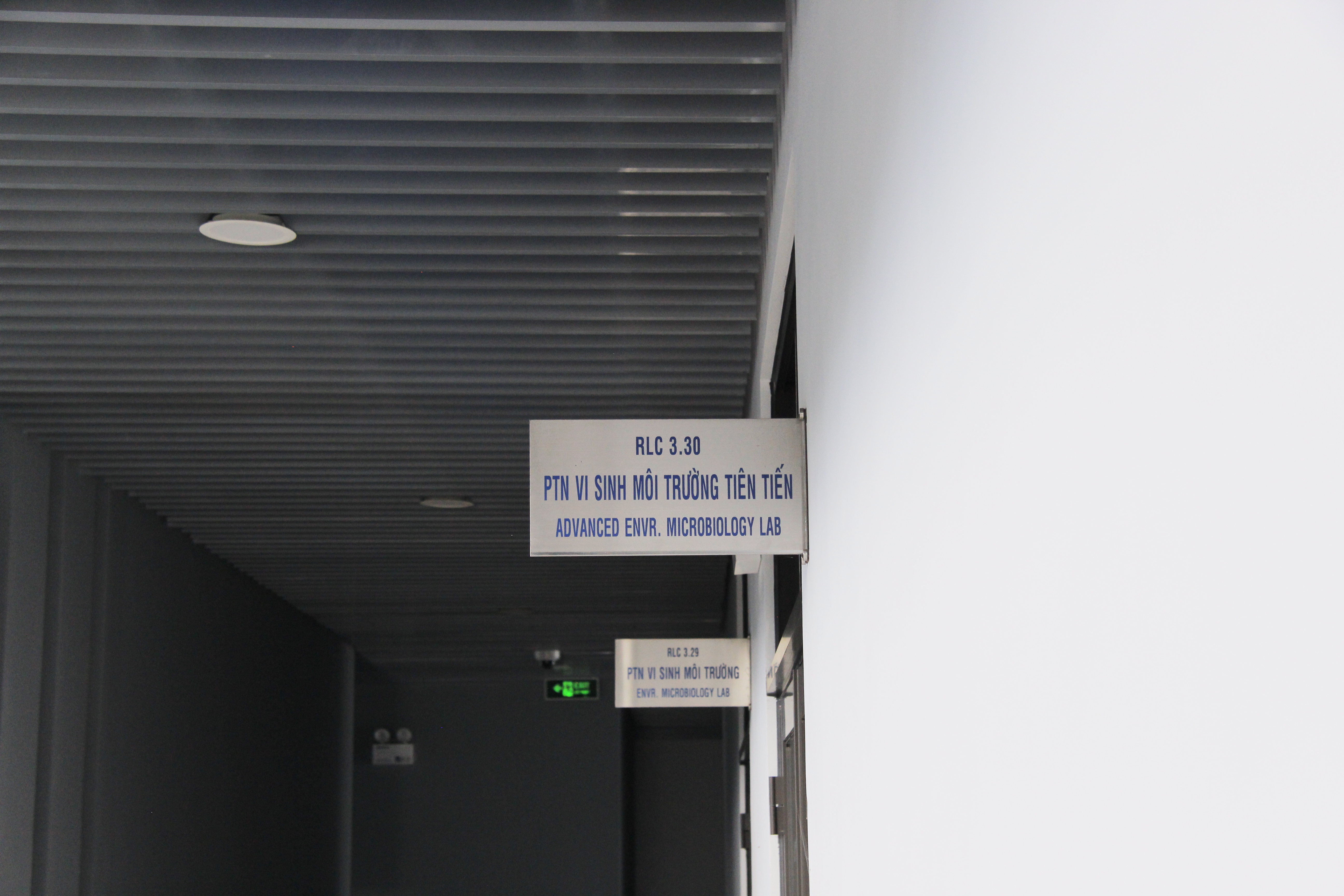
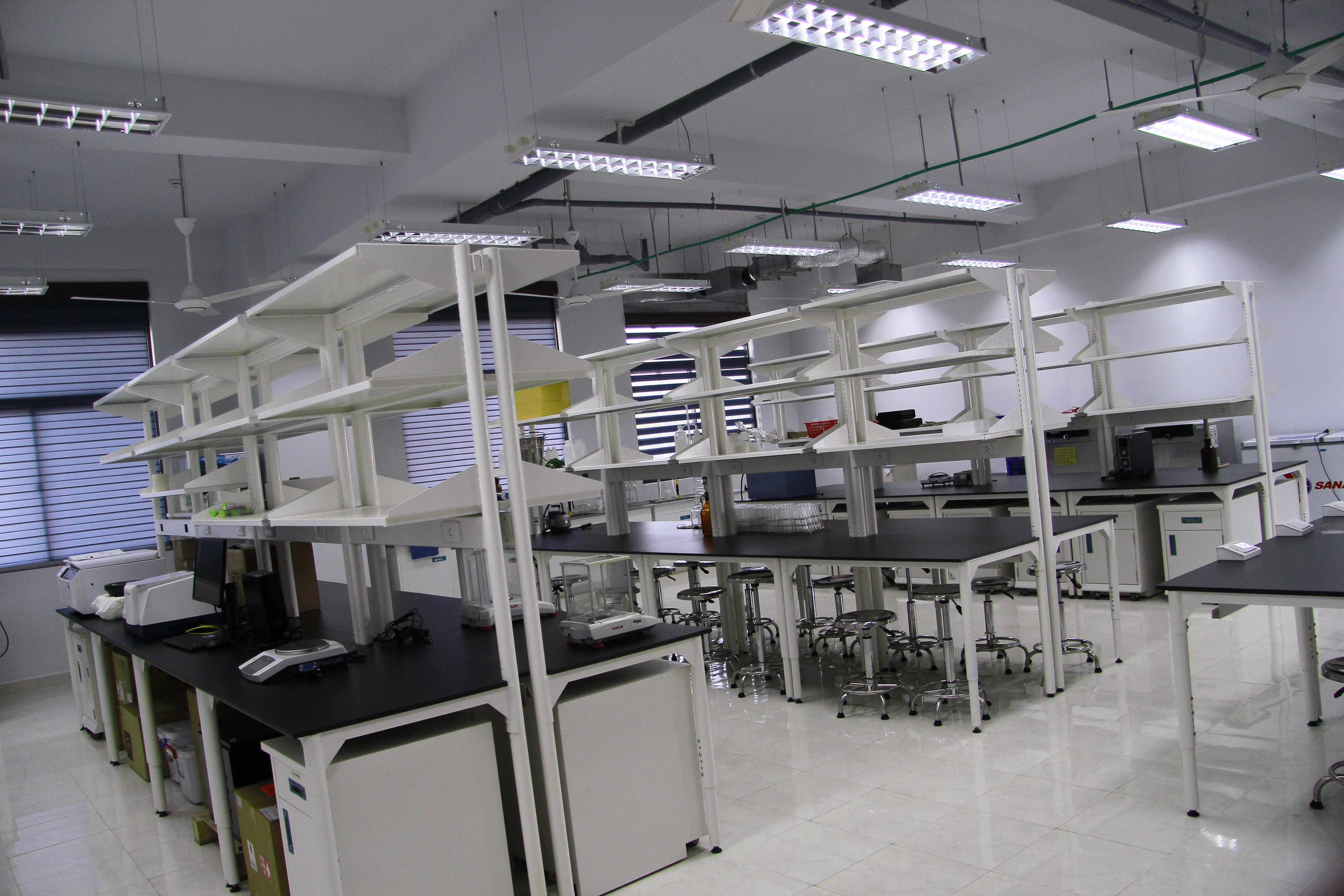

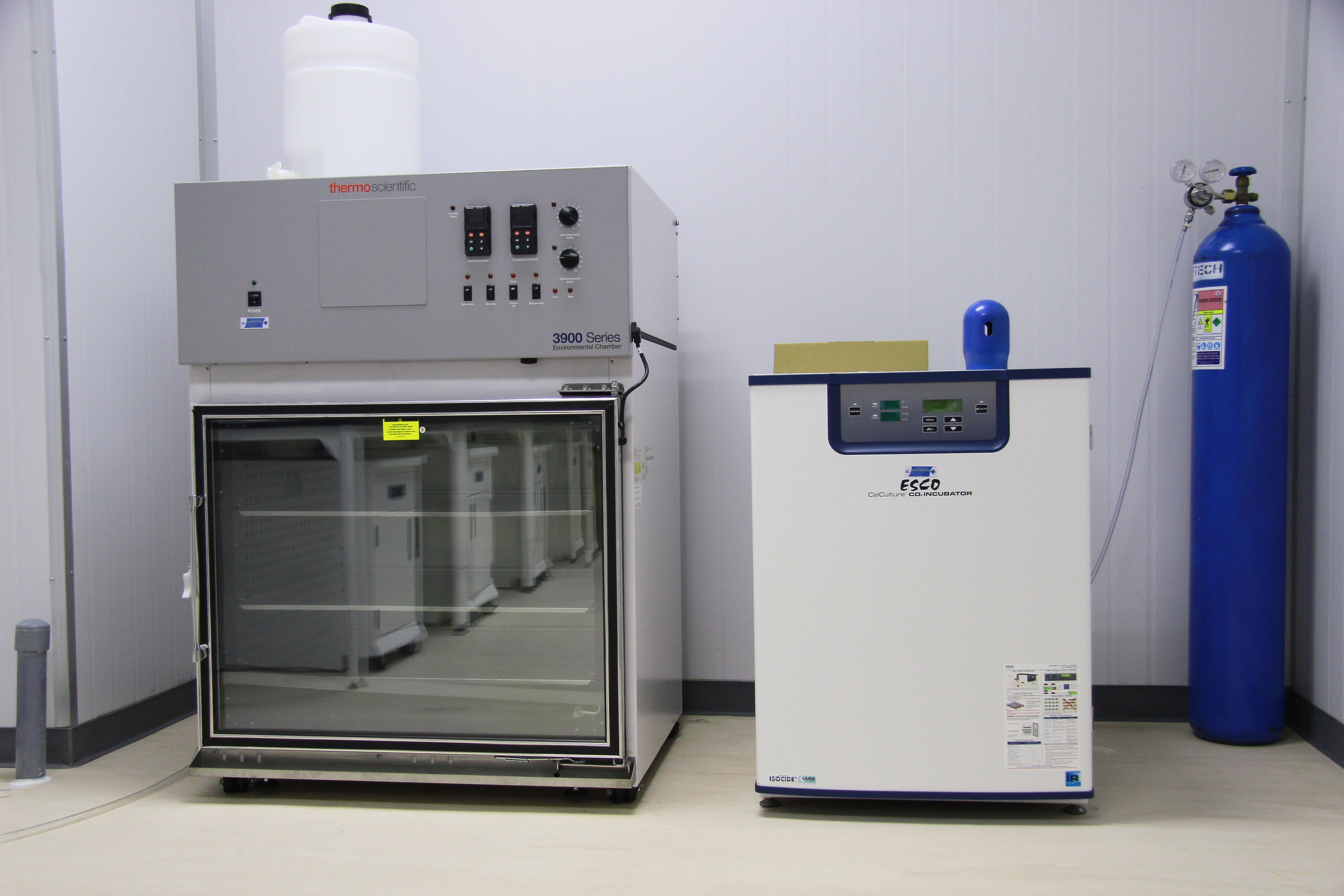
- Written by Tran Hoang Kha
- Category: KHMT - infrastructure
- Hits: 60
1. INTRODUCTION
Previously known as the Environmental Quality Practice Room, according to Decision No. 6404/QĐ-ĐHCT under the project to upgrade Can Tho University, the laboratory has now been established as the Soil and Water Environment Laboratory and the Advanced Soil and Water Environment Laboratory. This specialized laboratory serves teaching and research purposes. The laboratory operates regularly, allowing students and researchers to conduct practical experiments, consolidate theoretical knowledge, support specialized courses, and assist in scientific research for staff and students.
2. PERSONNEL
- Laboratory Head: Assoc. Prof. Dr. Nguyen Cong Thuan
3. LABORATORY LOCATION
Rooms 4.29 and 4.30, RLC Building
4. LABORATORY EQUIPMENT
The laboratory is equipped with various specialized tools and devices. It also collaborates with other laboratories within the department to ensure comprehensive support for learning and research activities.
The laboratory's equipment is primarily funded by government budgets and international cooperation programs, particularly Japan's ODA program.
Main laboratory equipment:
| No. | Equipment Name | Manufacturer | Model | Country |
|---|---|---|---|---|
| 1 | Ion Chromatography Set | Thermo Scientific | Dionex ICS-6000 | USA |
| 2 | Balance | A&D | GF-224A | Japan |
| 3 | Waterbath | Memmert | WNB 14 | Germany |
| 4 | Muffle Furnace | Nabertherm | LT 40/12 | Germany |
| 5 | Autoburette | Duran | 24 318 33 56 | Germany |
| 6 | Vacuum Filtration | ISO LAB | 043.03.001 | Turkey |
| 7 | Vacuum Pump | Eyela | A-1000S | Japan |
| 8 | TOC Analyzers | Shimadzu | TOC-LCPH | Japan |
| 9 | Turbidimeter | Hach | TL2300 | China |
| 10 | Soil Texture Analysis | Eijkelkamp | 08.16.SA | Netherlands |
| 11 | Acoustic Doppler Current Profilers | Teledyne | Sentinel V20 | USA |
| 12 | Total Station | Topcon | OS-101 | Japan |
| 13 | Centrifuge | Sigma | 6-16HS | Germany |
5. FUNCTIONS AND DUTIES
The Soil and Water Environment Laboratory and Advanced Soil and Water Environment Laboratory ensure two main functions: practical teaching and supporting scientific research.
Analytical capabilities of the Soil and Water Environment Laboratory and Advanced Soil and Water Environment Laboratory:
| Laboratory Name | Key Analytical Parameters | Key Equipment |
|---|---|---|
| Soil and Water Environment and Advanced Soil and Water Environment | TOC/TN, IC, TC | TNM-L ANALYSER |
| NH4+, NO2-, NO3-, PO43- | ICS-6000DC Ion Chromatography | |
| Soil water saturation | DM-PASK-KIT-2PCAG |
6. RESEARCH AND APPLICATION AREAS
- Teaching theoretical and practical courses such as: Environmental Monitoring Practice, Environmental Microbiology Practice, Environmental Microbiology, etc.
- Guiding student internships
- The laboratory has functions for research in environmental quality analysis, water and soil parameters analysis;
- Conducting experiments on environmental quality and environmental monitoring research;
- Supporting research and analysis in domestic and international cooperation projects.
7. RESEARCH AND DEVELOPMENT DIRECTIONS
- The laboratory develops human resources, regularly sending staff for training to improve professional skills.
- The laboratory will continue to enhance and fully equip devices to support practical teaching and research projects in the specialized field as well as other related fields.
8. LABORATORY ACTIVITIES
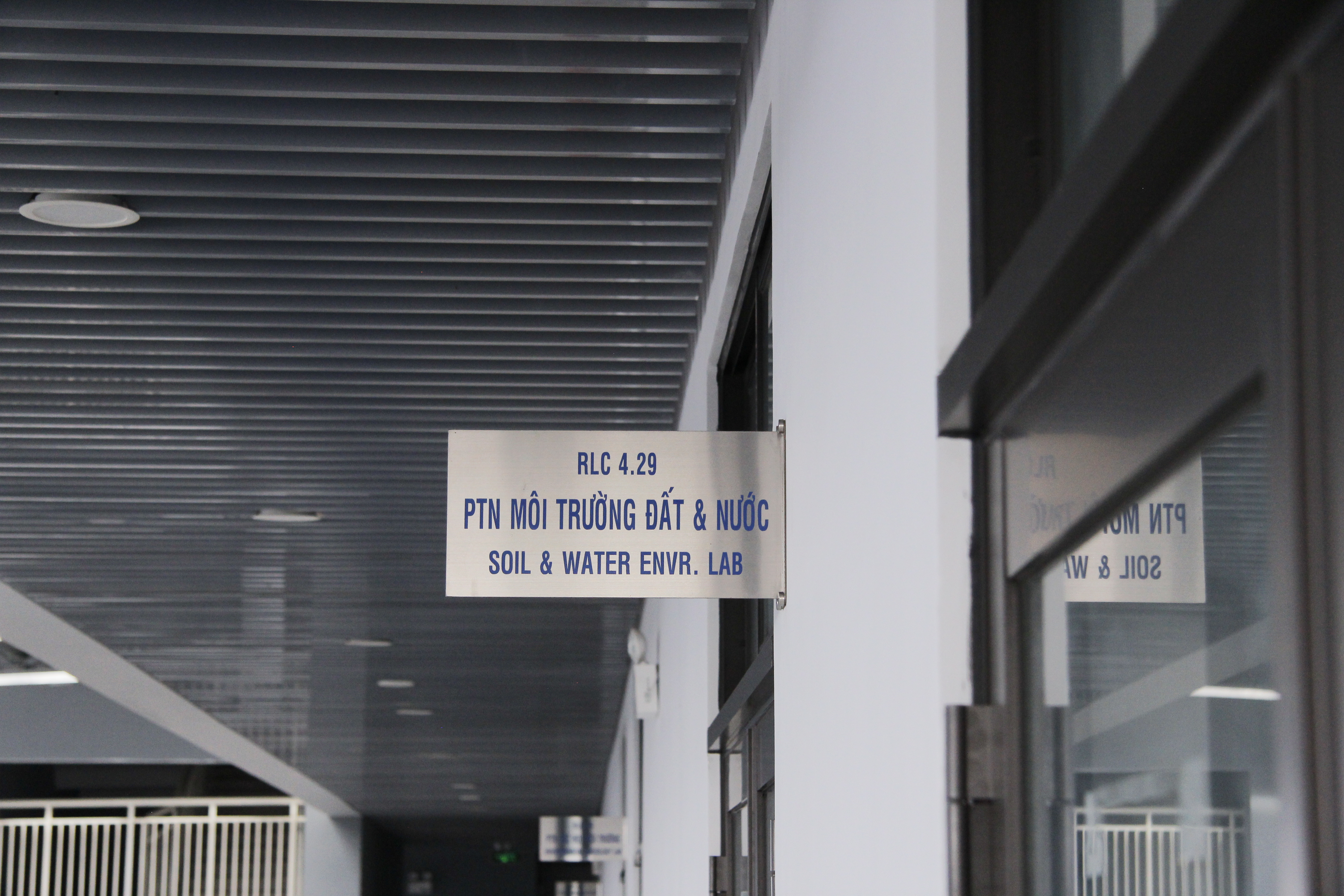
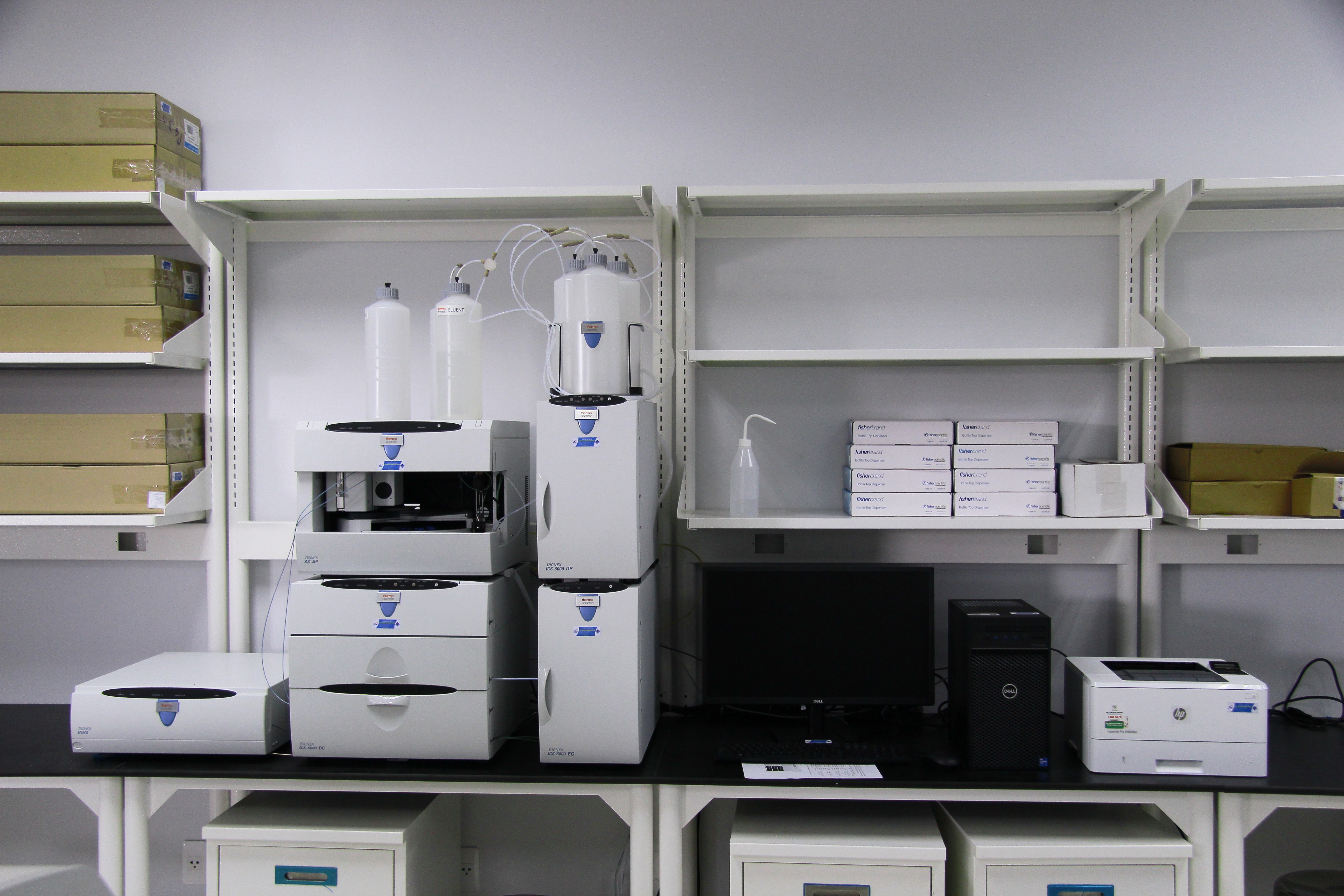
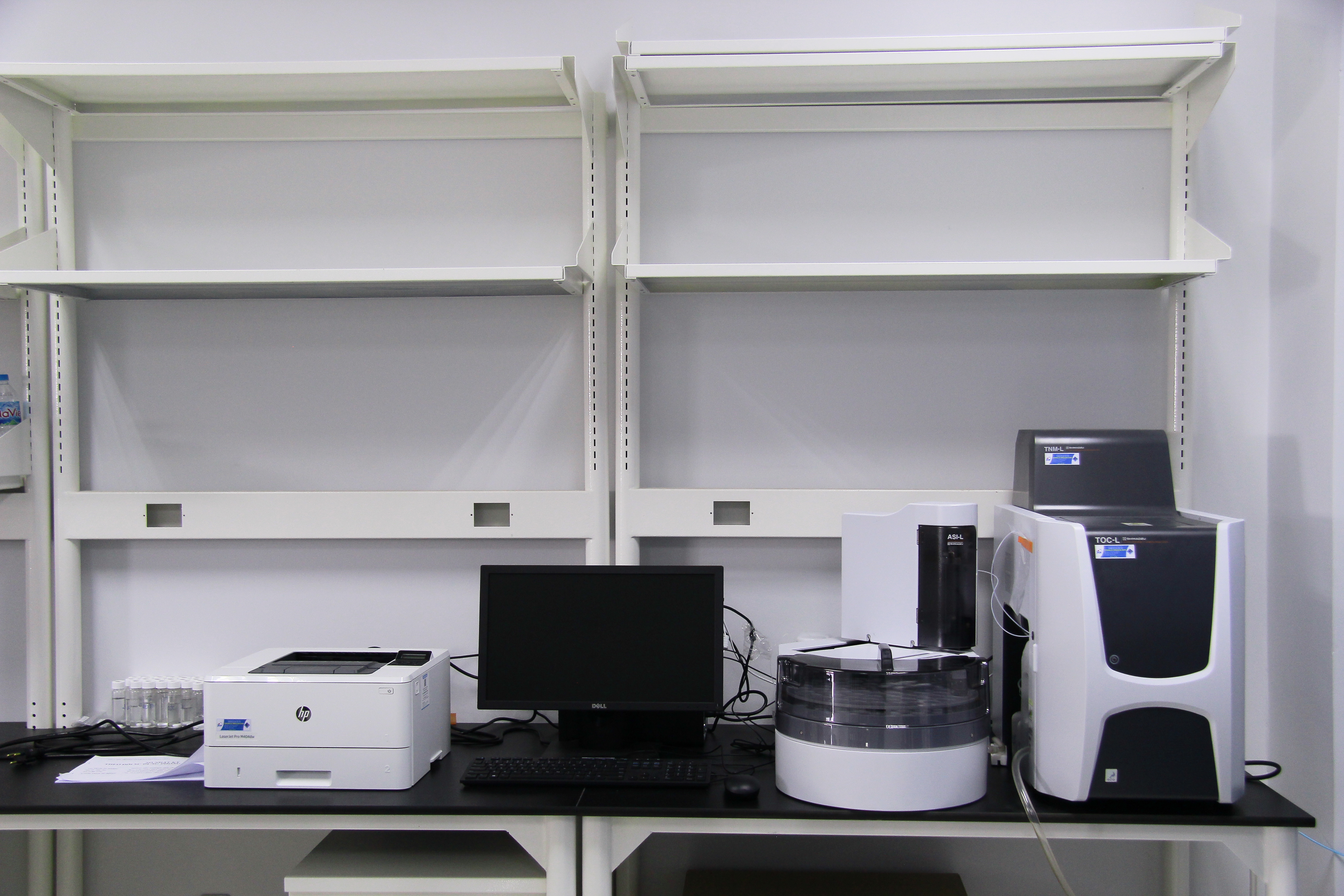
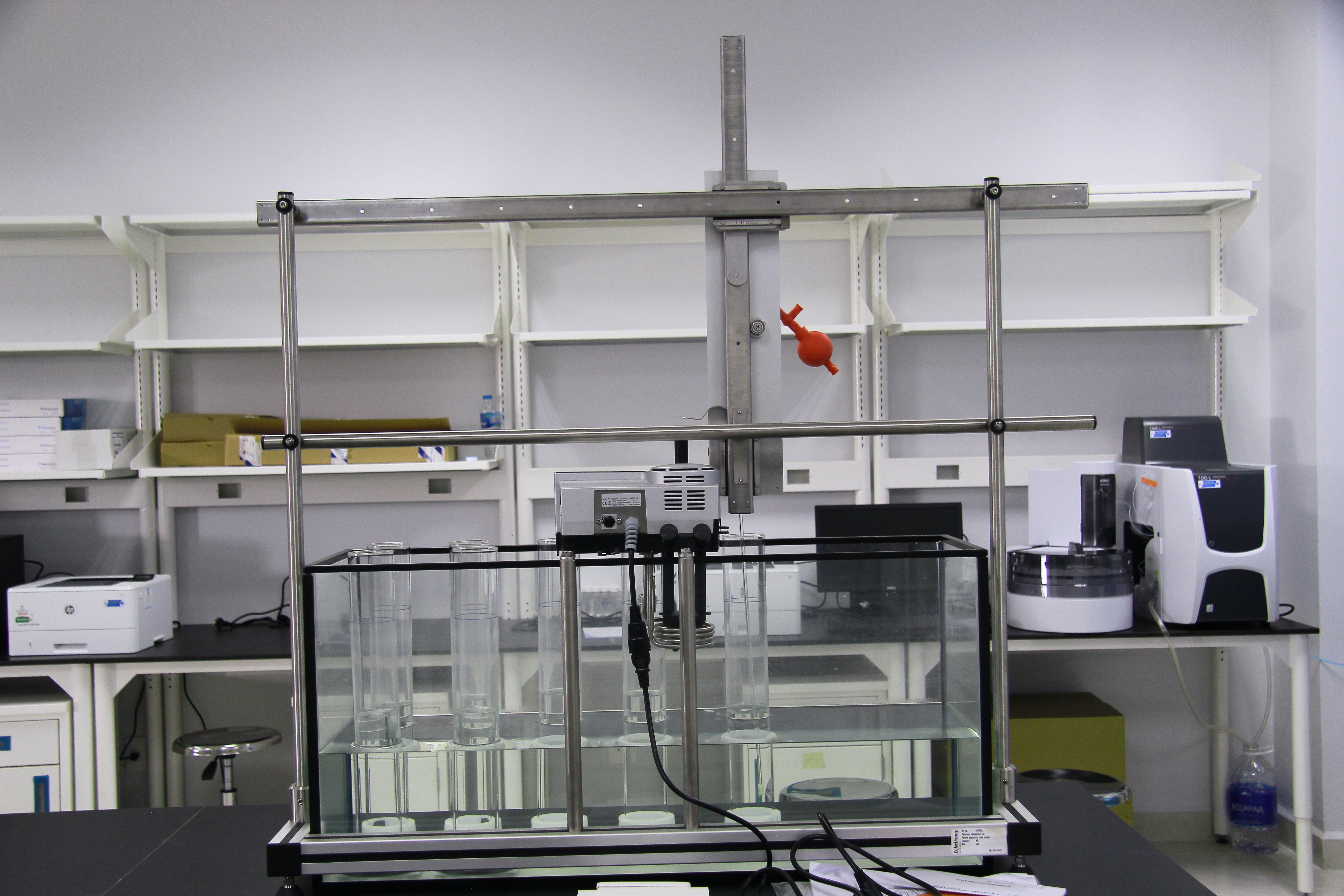
- Written by Tran Hoang Kha
- Category: KHMT - infrastructure
- Hits: 49
1. INTRODUCTION
Formerly known as the Environmental Toxicology Practice Room, under Decision No. 6404/QD-ĐHCT as part of the project to upgrade Can Tho University, it has now been established as the Environmental Toxicology and Advanced Environmental Toxicology Laboratory. This laboratory specializes in supporting teaching and research activities. The laboratory operates regularly, providing opportunities for students and learners to practice and conduct experiments, reinforcing theoretical knowledge, supporting specialized courses, and serving the scientific research needs of both faculty and students.
2. PERSONNEL
Laboratory Head: Assoc. Prof. Dr. Trần Sỹ Nam
- Contact Email: This email address is being protected from spambots. You need JavaScript enabled to view it.
3. LABORATORY LOCATION
Rooms 4.27 and 4.28, RLC building
4. LABORATORY EQUIPMENT
The laboratory is fully equipped with specialized instruments and tools. It also coordinates with other laboratories within the faculty to ensure comprehensive support for both teaching and research. The laboratory's equipment is primarily funded through the state budget and international cooperation programs, particularly Japan's ODA program.
Some of the main equipment in the laboratory includes:
| No. | Equipment Name | Manufacturer | Model | Country |
|---|---|---|---|---|
| 1 | Centrifuge | Eppendorf Himac | CR22N | Japan |
| 2 | Microwave Digester | Anton Paar | Multiwave 5000 | Austria |
| 3 | Balance | Mettler Toledo | MS205DU | Switzerland |
| 4 | Flow Analyzer Set | FIA Lab | FIALYZER-1000 | USA |
| 5 | UV/VIS Spectrophotometer | Hitachi | UH5300 | Japan |
| 6 | Vortex-mixer | IKA | MS 3 basic | Malaysia |
| 7 | Micropipette | Mettler Toledo - Rainin | L-1000XLS | USA |
| 8 | GC Electron Capture Detector | Shimadzu | ECD-2014 | Japan |
| 9 | Incubator | Memmert | IN160 | Germany |
| 10 | Kjeldahl Digester | Gerhardt | VAP500 | Germany |
| 11 | Oven | Memmert | IN160 | Germany |
| 12 | EC/TDS/Sal Meter, pH, DO, Eh | TOA DKK | MM-41DP | Japan |
5. LABORATORY FUNCTIONS AND CAPACITY
The Environmental Toxicology and Advanced Environmental Toxicology Laboratory is primarily responsible for practical teaching and supporting scientific research.
Laboratory Capabilities
| Parameter | Applicable Standard |
|---|---|
| pH | TCVN 6492:2011 |
| EC | SMEWW 2510-B |
| Salinity | SMEWW 2520-B |
| Turbidity | TCVN 6184-1996, SMEWW 2130 B |
| Color | TCVN 6185-1996, SMEWW 2120 |
| DO | TCVN 7324:2004 |
| BOD520 | TCVN 6001-1:2008 |
| COD | TCVN 6491:1999, SMEWW 5220.C:2012 |
| Total Hardness | TCVN 6177:1996, SMEMW 2340.B:2012 |
| Total Solids (TS) | SMEWW 2540.B |
| Suspended Solids (TSS) | TCVN 6625:2000, SMEWW 2540.D |
| Dissolved Solids (TDS) | SMEWW 2540.C:2012 |
| Total Iron | TCVN 6177-1996, SMEWW 3500-Fe |
| Total Nitrogen (TN) | SMEWW 4500-N.B, 4500-N.C |
| N-NH4+ | SMEWW-4500-NH3.F:2012 |
| N-NO3- | TCVN 6180-1996, SMEWW 4500-NO3–B |
| N-NO2- | SMEWW 4500-NO2.B:2012 |
| Total Phosphorus (P) | SMEWW-4500-P.B:2012 |
| P-PO43- | SMEWW-4500-P.E:2012 |
| Organochlorine Pesticides | TCVN 9241:2012 |
| Organophosphorus Pesticides | International standards |
| Carbamate Pesticides | International standards |
| Pyrethroid Pesticides | International standards |
| Volatile Organic Acids | International standards |
| Enzyme Activity (ChE) | Determined using spectrophotometry |
| Acute Toxicity (LC50) | International standards |
6. RESEARCH AND APPLICATION FIELDS
- Teaching theoretical and practical courses such as Environmental Impact Assessment, Risk Assessment, Applied Environmental Chemistry, Renewable Energy, etc.
- Guiding student internships.
- Conducting research in the field of environmental toxicology, including experiments to determine the LC50 of pollutants, and their effects on enzyme activities such as Cholinesterase, Acetylcholinesterase, and Butyrylcholinesterase.
- Supporting research and analysis in both domestic and international collaborative projects.
7. RESEARCH AND DEVELOPMENT ORIENTATION
- Developing human resources and regularly sending staff for training to improve professional skills.
- Continuously enhancing and supplementing the necessary equipment to support practical teaching and research projects within the specialized field as well as related disciplines.
8. LABORATORY ACTIVITIES
- Written by Tran Hoang Kha
- Category: KHMT - infrastructure
- Hits: 64
1. INTRODUCTION
Previously known as the Aquatic Resources Practice Room, under Decision No. 6404/QD-ĐHCT as part of the project to upgrade Can Tho University, it has now been established as the Advance Environmental Technology laboratory. This specialized laboratory supports teaching and research activities. The laboratory operates regularly, providing opportunities for students and learners to practice and conduct experiments, reinforcing theoretical knowledge, supporting specialized courses, and serving the scientific research needs of both faculty and students.
2. PERSONNEL
Laboratory Head: Assoc. Prof. Dr. Nguyễn Xuân Lộc
Contact Email: This email address is being protected from spambots. You need JavaScript enabled to view it.
3. LABORATORY LOCATION
Room 2.23, ATL building
4. LABORATORY EQUIPMENT
The laboratory is fully equipped with specialized instruments and tools. It also coordinates with other laboratories within the faculty to ensure comprehensive support for both teaching and research. The laboratory's equipment is primarily funded through the state budget and international cooperation programs, particularly Japan's ODA program.
Some of the main equipment in the laboratory includes:
| No. | Equipment Name | Manufacturer | Model | Country |
|---|---|---|---|---|
| 1 | AASpectrometer | PerkinElmer | PinAAcle 900T | Singapore |
| 2 | Microwave Digester | Anton Paar | Multiwave 5000 | Austria |
| 3 | Balance | Mettler Toledo | MS205DU | Switzerland |
| 4 | Mixer | Buchi | B-400 | Switzerland |
| 5 | Photosynthesis Meter | LI-CORBiosciences | LI-6800 | USA |
| 6 | Photosynthesis and Respiration System | Hansatech Instruments | Chlorolab3+ | UK |
| 7 | Photosynthesis Yield Analyzer | Walz | MINI-PAM II | Germany |
| 8 | Muffle Furnace | Yamato | FO200 | Japan |
| 9 | Water Purification | Merck Millipore | DirectQ 3 UV | France |
| 10 | Quantum Sensor | LI-CORBiosciences | LI-190R | USA |
| 11 | UPS 2000VA | Santak | Santak C2KS | China |
| 12 | HPLC Fluorescence Detector | Thermos Fisher Scientific | FLD-3400RS | Germany |
5. LABORATORY FUNCTIONS AND CAPACITY
The Advanced Environmental Engineering Laboratory fulfills two primary functions: practical teaching and supporting scientific research.
Analytical Capabilities of the Advanced Environmental Engineering Laboratory:
| Laboratory Name | Key Analytical Parameters | Key Equipment |
|---|---|---|
| Advanced Environmental Engineering | Heavy metals (Pb, As, Cr, Fe, Mn, Ca, K, Na, etc.) | AA Spectrometer |
| Photosynthesis rate | Photosynthesis Meter | |
| Photosynthesis efficiency | Photosynthesis Yield Analyzer |
6. RESEARCH AND APPLICATION FIELDS
- Teaching theoretical and practical courses such as Ecology, Wastewater Treatment, etc.
- Guiding student internships.
- The laboratory serves research in the field of environmental engineering, focusing on the effects of pollutants on organisms and the environment, as well as the impact of heavy metals in soil and water on organisms.
- Supporting teaching and research in fields within the laboratory's function, including ecology, and the effects of pollutants and heavy metals on organisms and the soil and water environment.
- Supporting research and analysis in both domestic and international collaborative projects.
7. RESEARCH AND DEVELOPMENT ORIENTATION
- Developing human resources by regularly sending staff for training to improve professional skills.
- Continuously enhancing and supplementing the necessary equipment to support practical teaching and research projects within the specialized field as well as related disciplines.
8. LABORATORY ACTIVITIES
